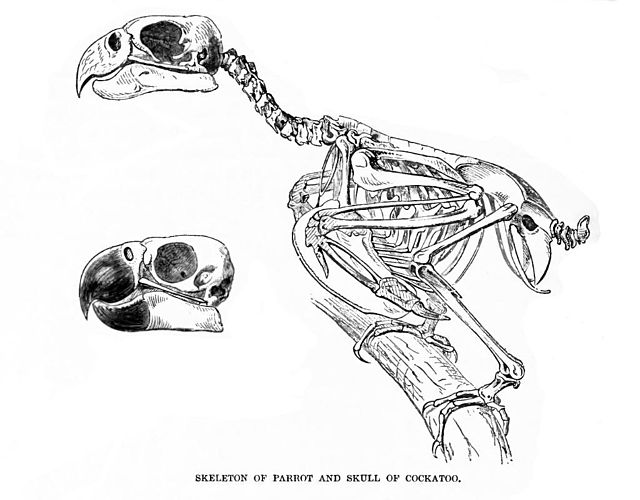The thick-billed parrot is a medium-sized parrot endemic to Mexico that formerly ranged into the southwestern United States. Its position in parrot phylogeny is the subject of ongoing discussion; it is sometimes referred to as thick-billed macaw or thick-billed conure. In Mexico, it is locally called guacamaya ("macaw") or cotorra serrana. Classified internationally as Endangered through IUCN, the thick-billed parrot's decline has been central to multiple controversies over wildlife management. In 2018, the estimated wild population in Mexico was 1,700.
Thick-billed parrot
Juvenile (pale bill) and adult (dark bill) at Twycross Zoo, England
Adult at Edinburgh Zoo, Scotland
Compilation image of an original photograph and recreation based upon that photograph from Kiva #7 at Pottery Mound.
Parrots (Psittaciformes), also known as psittacines, are birds with a strong curved beak, upright stance, and clawed feet. They are conformed by four families that contain roughly 410 species in 101 genera, found mostly in tropical and subtropical regions. The four families are the Psittaculidae, Psittacidae, Cacatuoidea (cockatoos), and Strigopidae. One-third of all parrot species are threatened by extinction, with a higher aggregate extinction risk than any other comparable bird group. Parrots have a generally pantropical distribution with several species inhabiting temperate regions as well. The greatest diversity of parrots is in South America and Australasia.
Parrot
Fossil skull of a presumed parrot relative from the Eocene Green River Formation in Wyoming
Skeleton of a parrot
Blue and gold macaw (Ara ararauna) skeleton on display at the Museum of Osteology.








